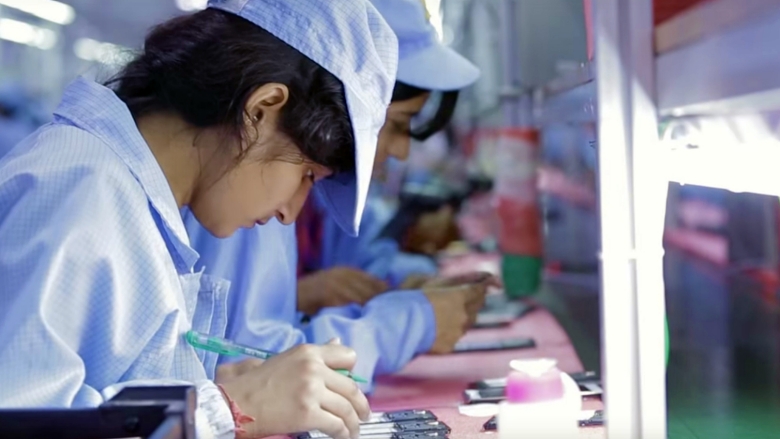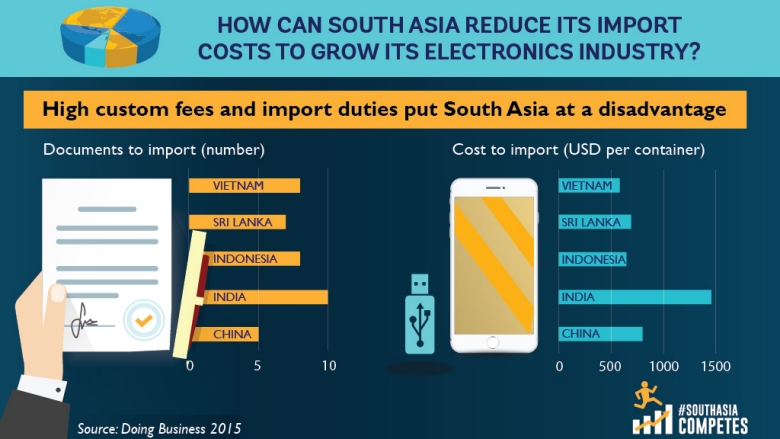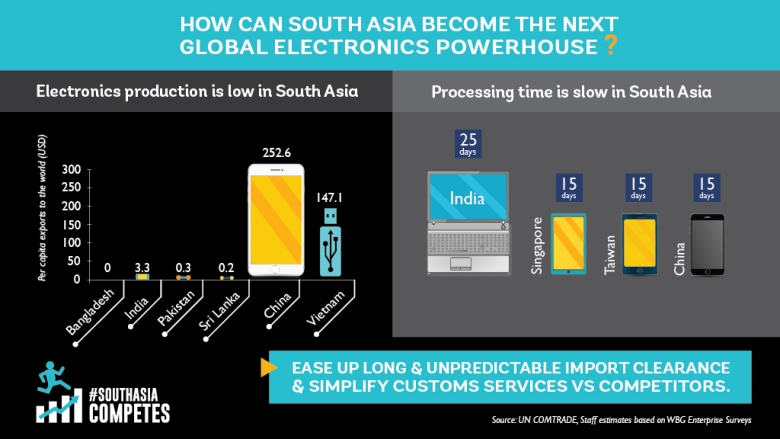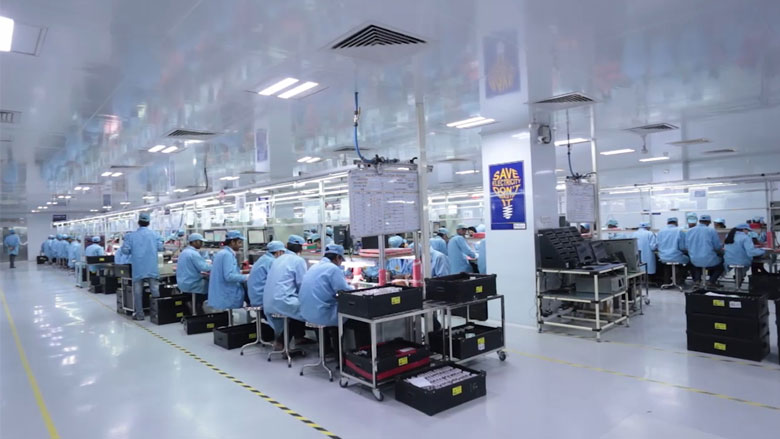Even so, electronics production in South Asian countries is almost invisible compared to East Asian competitors. India, which has boosted its exports of mobile telephones, audio players, and display technologies, is the regional leader. But India is only the 14th largest electronics producer globally, behind countries such as Mexico (8th), Brazil (10th) and Thailand (12th).
A new World Bank study – “South Asia’s Turn: Policies to Boost Competitiveness and Create the Next Export Powerhouse” – explains that industrial clusters that give manufacturers the efficiencies they need in the highly competitive global electronics market are scarce in South Asia. Also, the region has precious few large tracts of industrial land where electronics firms can take advantage of top-flight import and export infrastructure that make connecting with global supply chains easy and economical.




